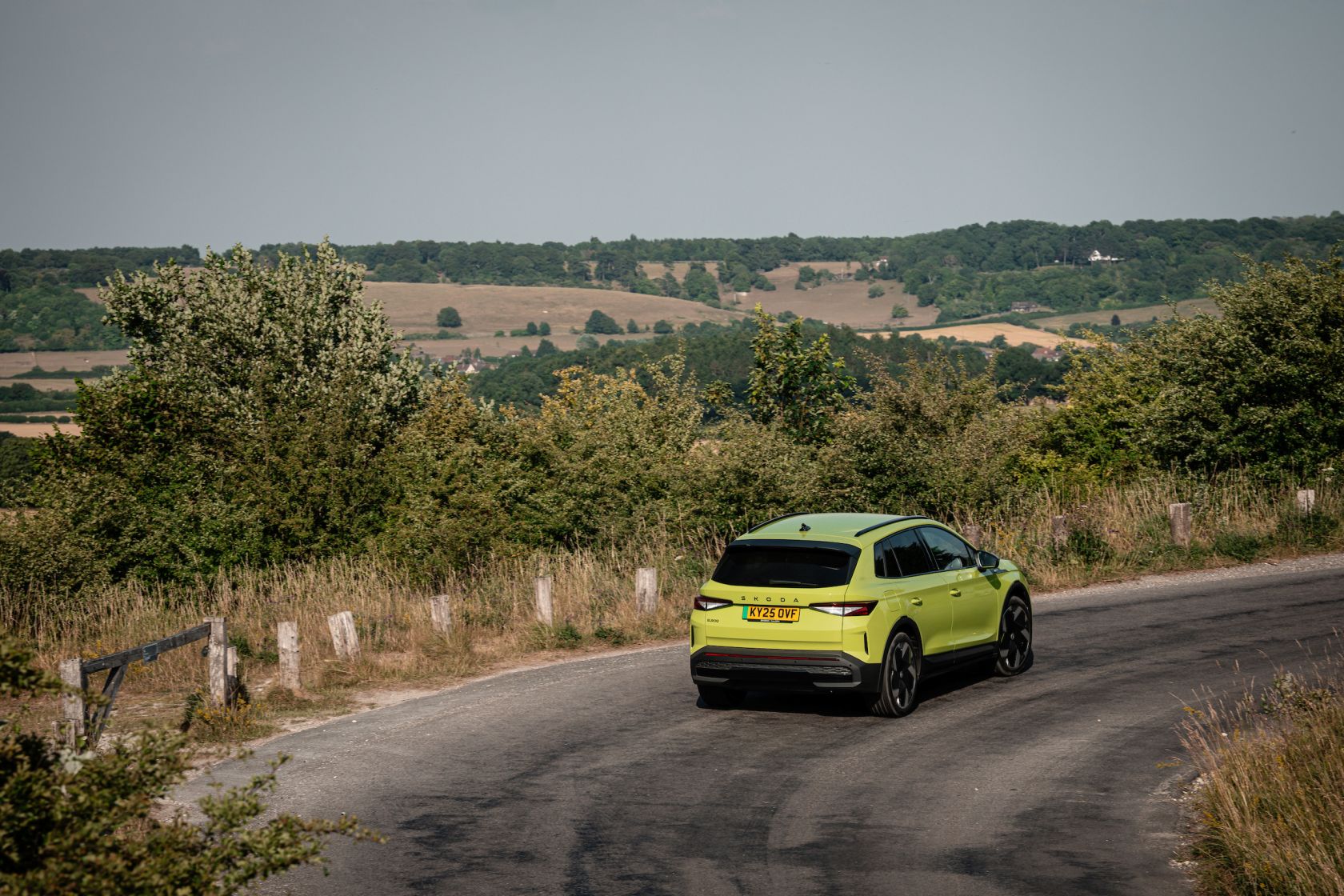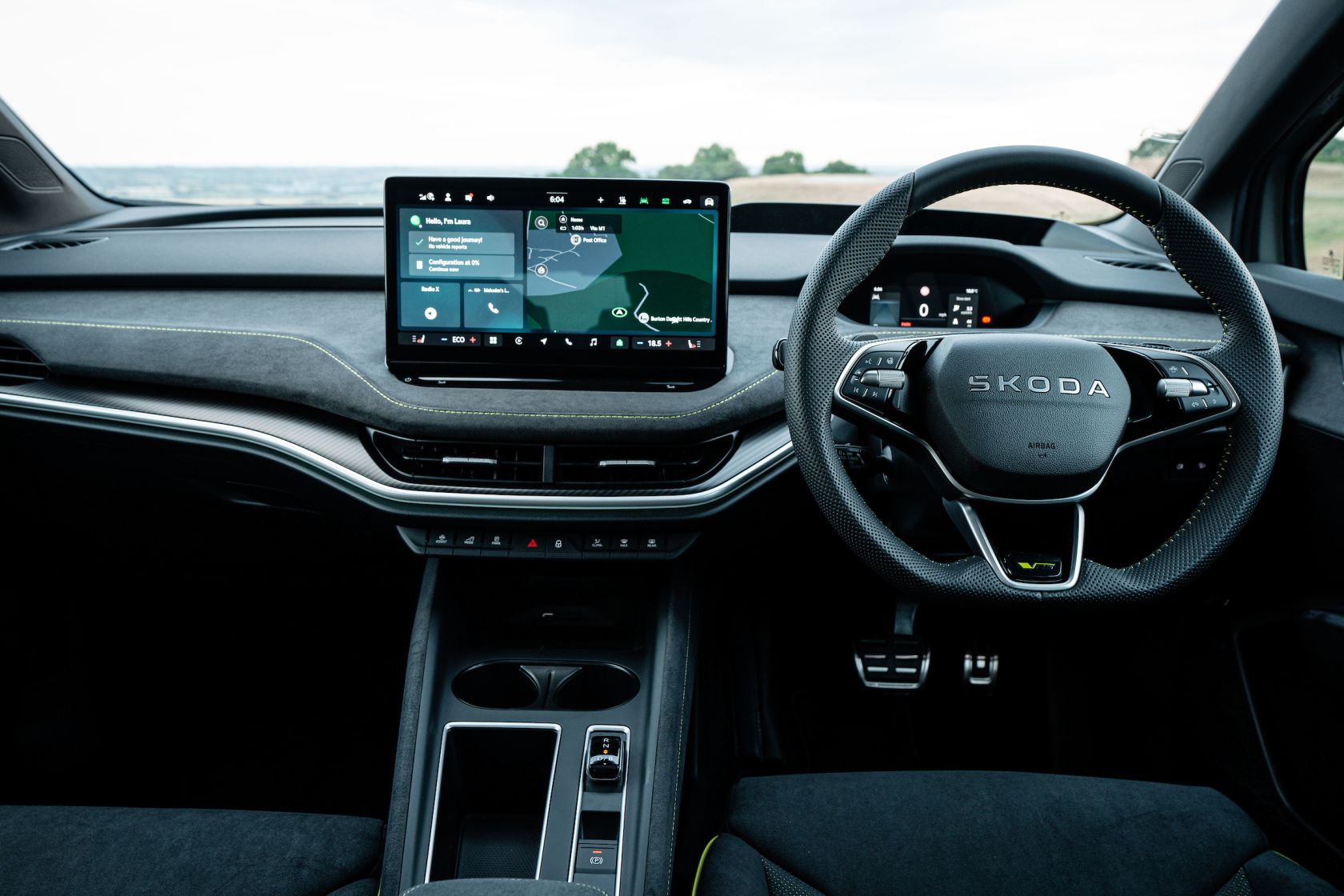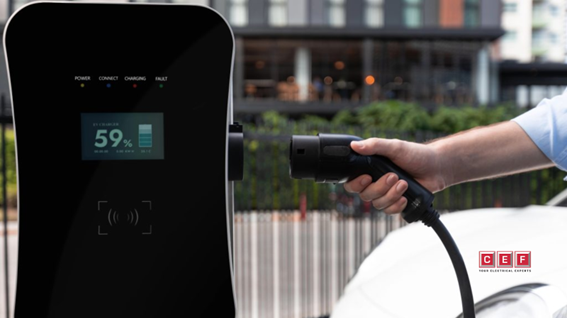What is it?
Skoda’s performance vRS badge has graced the rear ends of a wide variety of models over the years. From petrol, diesels to hybrids, vRS Skodas have a cult following to rival the best from Ford and Volkswagen. In 2022, Skoda caused eyebrows to raise amongst the vRS fraternity by applying the fabled three letters to a pure electric model.
The resulting Enyaq vRS, available as an SUV and coupe-SUV, added some extra spice and aggression to an otherwise highly accomplished family car. Now, Skoda has done the same to the Enyaq’s baby brother, and this is our first drive of it.
What’s new?
The formula is familiar – twin motors, extra power, lowered ride height, adjustable chassis control, big wheels, and lurid Hyper Green paintwork and interior trim.
It’s some extra garnish to what is already an excellent small electric SUV – one that, in non-vRS guise, became Europe’s best-selling EV in April – so there’s still the same comfortable interior, exterior tech, and spacious rear accommodation.
What’s under the bonnet?
Perhaps, surprisingly, the Elroq vRS gets twin electric motors, separating it from its mechanically related and similarly sized sisters, the Volkswagen ID.3 GTX and Cupra Born VZ. That means a chunky 335bhp, giving a 0-60mph time of 5.2 seconds, allowing it to match the larger Enyaq vRS in being Skoda’s fastest production car ever.
That power comes from a new 84kWh (79kWh usable) battery pack – the largest in the Elroq range, and unique to the vRS. Skoda claims up to 342 miles from a full charge, while a 10-to-80-per-cent top-up takes 26 minutes thanks to 185kW maximum DC charging.

What’s it like to drive?
In true vRS style, Skoda has spent some time on the Elroq vRS’s chassis to give a sportier drive compared to the more humdrum models in the range. It gets thicker anti-roll bars and shorter springs, resulting in a 15mm lower ride height at the front and a 10mm drop at the rear, while the rear tyres are wider than the fronts (255-section compared to 235-section).
With all of that and the small question of 335bhp, you might expect the Elroq vRS to be a humdinger, but it falls a little flat. It’s a really quick point-to-point car, and despite sharing the larger Enyaq’s underpinnings, the shorter Elroq feels noticeably more reactive on a twisting road. But it never really thrills, instead offering a surprisingly comfortable, wafty level of ride and highly competent handling, even though there are 15 different adjustments for the adaptive dampers. This might leave some keener drivers feeling a little underwhelmed.
How does it look?
In normal guise, the Elroq is a sharply styled electric SUV that successfully shrinks the good looks of the Enyaq into a smaller package. Finished in vRS-only Hyper Green and with the optional (£620) 21-inch wheels fitted, the vRS really does look the part, but don’t get too carried away.
Go for a less look-at-me colour and stick with the standard black-painted 20-inch alloys, and you’d be hard-pressed to tell the difference between this range-topper and the lesser SportLine model. That’s a shame, really, as is the odd decision to only stick vRS badges on the front wings; from the back, aside from the full-width reflector, there’s nothing to shout that this is the hot model.
What’s it like inside?
If you’ve spent time in the Enyaq vRS then this smaller Elroq will be very familiar. Most surfaces have received a smattering of Alcantara, and there’s acres of lime-coloured stitching across the dash and around the steering wheel. The lime theme even extends to the piping on the seats and the ambient lighting. The seats are a highlight as they are high-backed, very comfortable, and have the vRS logo stitched into the headrests.

Other than that, it’s standard Elroq. So, the dashboard is nicely laid out, it all feels very nicely put together, and the interior is spacious – the rear seats are supportive and offer great legroom, and the 470-litre boot is average for the class.
What’s the spec like?
As this is the range-topping model in the Elroq line-up it naturally comes very well equipped. Along with the heated sporty seats, there are LED Matrix headlights, a hands-free electric tailgate, dynamic chassis control, a head-up display, a 360-degree parking camera, and a posh Canton sound system.
Verdict
In many ways, the Elroq vRS is true to the fabled badge’s heritage – it offers potent performance in a very nicely refined, easy-to-live-with package. But it does fall a little short on driver thrills, which is a key component of the vRS appeal traditionally, plus, it doesn’t really do a whole lot more than the lesser SportLine 85 model. That car is a whopping £4,950 cheaper, so you really have to want the extra 53bhp, the four-wheel drive, and the lime green details that come with the vRS.

That said, when treated like a fast, comfortable and refined range-topper with a bit of extra visual spice, the vRS impresses. But just don’t expect a thrill-a-minute driving experience.
Facts at a glance
Model as tested: Skoda Elroq vRS
Engine: Twin electric motors
Power: 335bhp
Torque: 679Nm
Max speed: 112mph
0-60mph: 5.2 seconds
MPG: NA
Emissions: 0g/km
Range: 339 miles
Maximum charging speed: 185kWh













